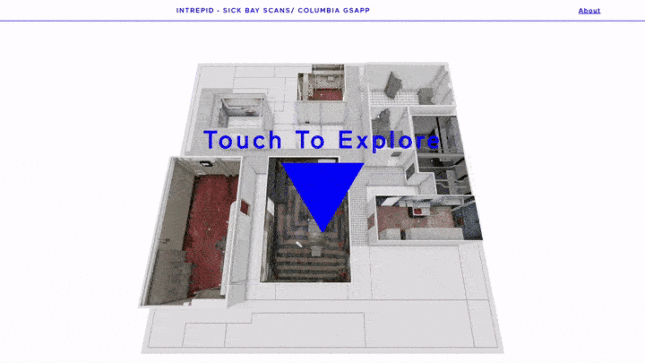For all the advances in technology over the past decade, the experience of curating and viewing museum shows has remained relatively unchanged. Even though digital archive systems exist and have certainly helped bring old institutions into the present, they have relatively little influence over the ways museum shows are designed and shared. The normal practice is more or less “old school” and even borderline “dysfunctional,” said Bika Rebek, principal of the New York and Vienna–based firm Some Place Studio.
In fact, a survey she conducted early on found that many of the different software suites that museum professionals were using were major time sinks for their jobs. Fifty percent said they felt they were “wasting time” trying to fill in data or prepare presentations for design teams.
To Rebek, this is very much an architectural problem, or at least a problem architects can solve. She has been working over the past two years, supported by NEW INC and the Knight Foundation, to develop Tools for Show, an interactive web-based application for designing and exploring exhibitions at various scales—from the level of a vitrine to a multi-floor museum.

Leveraging her experiences as an architect, 3D graphics expert, and exhibition designer (she’s worked on major shows for the Met and Met Breuer, including the OMA-led design for the 2016 Costume Institute exhibition Manus x Machina), Rebek began developing a web-based application to enable exhibition designers and curators to collaborate, and to empower new ways of engaging with cultural material for users anywhere.
Currently, institutions use many different gallery tools, she explained, which don’t necessarily interact and don’t usually let curators think spatially in a straightforward way. Tools for Show allows users to import all sorts of information and metadata from existing collection management software (or enter it anew), which is attached to artworks stored in a library that can then be dragged and dropped into a 3D environment at scale. Paintings and simple 3D shapes are automatically generated, though, for more complex forms where the image projected onto a form of a similar footprint isn’t enough, users could create their own models.
For example, to produce the New Museum’s 2017 show Trigger: Gender as a Tool and a Weapon, Rebek rendered the space and included many of the basic furnishings unique to the museum. For other projects, like a test case with the Louvre‘s sculptures, she found free-to-use models and 3D scans online. Users can drag these objects across the 3D environments and access in-depth information about them with just a click. With quick visual results and Google Docs-style automatic updates for collaboration, Tools for Show could help not just replace more cumbersome content management systems, but endless emails too.

Rebek sees Tools for Show as having many potential uses. It can be used to produce shows, allowing curators to collaboratively and easily design and re-design their exhibitions, and, after the show comes down it can serve as an archive. It can also be its own presentation system—not only allowing “visitors” from across the globe to see shows they might otherwise be unable to see, but also creating new interactive exhibitions or even just vitrines, something she’s been testing out with Miami’s Vizcaya Museum and Gardens. More than just making work easier for curators and designers, Tools for Show could possibly give a degree of curatorial power and play over to a broader audience.
“[Tools for Show] could give all people the ability to curate their own show without any technical knowledge,” she explained. And, after all, you can’t move around archival materials IRL, so why not on an iPad?

While some of the curator-focused features of Tools for Show are in the testing phase, institutions can already request the new display tools like those shown at Vizcaya. Rebek, as a faculty member at Columbia University’s Graduate School of Architecture, Planning, and Preservation, has also worked with students to use Tools for Show in conjunction with photogrammetry techniques in an effort to develop new display methods for otherwise inaccessible parts of the Intrepid Sea, Air, and Space Museum, a history and naval and aerospace museum located in a decommissioned aircraft carrier floating in the Hudson River. At a recent critique, museum curators were invited to see the students’ new proposals and explore the spatial visualizations of the museum through interactive 3D models, AR, VR, as well as in-browser and mobile tools that included all sorts of additional media and information.
For more on the latest in AEC technology and for information about the upcoming TECH+ conference, visit techplusexpo.com/nyc/.
